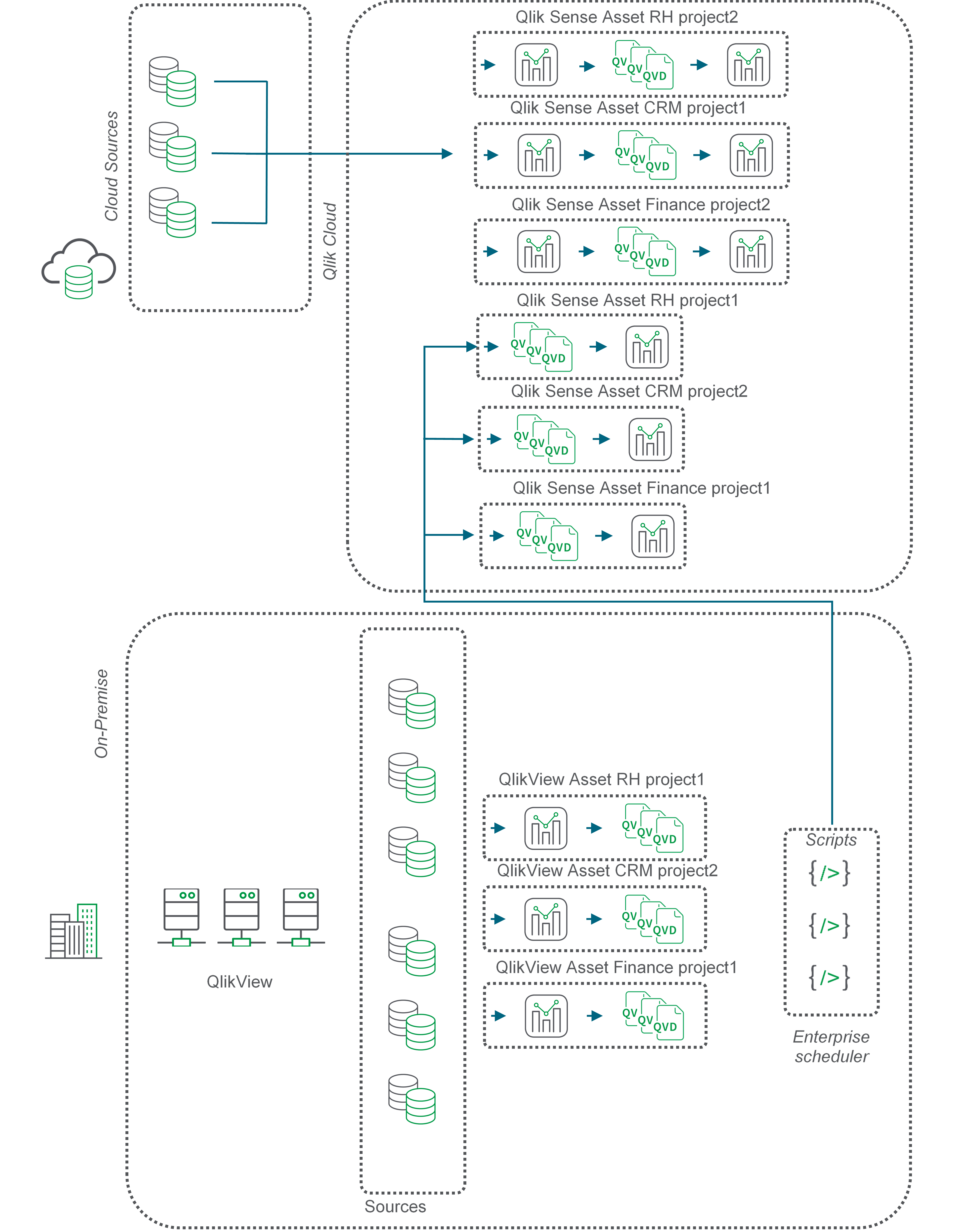Migrating data connections
Tag your data connection’s status and method of migration. You can track progress in the Data connection sheet in the Migration app.
-
Identify your QlikView data connections.
-
Validate your migration / connectivity strategy for each data connection type:
-
Native – Cloud based sources for which you can connect from SaaS.
-
Data Gateway – Data Access – data sources that will remain on premise.
-
-
Folder connections should be migrated to data files within a shared / managed space or some storage provider (S3, OneDrive).
-
Data connections used with few apps should be created in same space as the application.
-
Data connection used with many apps should be created in its own shared space to facilitate single connection definition / reuse.
-
Web Files connections should be replaced with REST or OData where possible.
-
Manually migrate / create new connections to SaaS.
Identifying your QlikView data connections
The QlikView Governance Dashboard, which is included in the QlikView to SaaS Migration App in the Qlik Cloud migration tools allows you to track the connections used per application.
For more information, see the QlikView Governance Dashboard Data Lineage page.
Planning your data migration
-
List your data sources by business and project.
-
Define your data migration strategy based on your data sources and tools. See Planning your migration to Qlik Cloud.
Examples
A multi-project platform
| Business | Projects | Data sources |
|---|---|---|
| RH | Project 1 | On-premises data sources |
| RH | Project 2 | Cloud-based data sources |
| CRM | Project 1 | Cloud-based data sources |
| CRM | Project 2 | On-premises data sources |
| Finance | Project 1 | On-premises data sources |
| Finance | Project 2 | Cloud-based data sources |
QVD movement in a multi-project platform
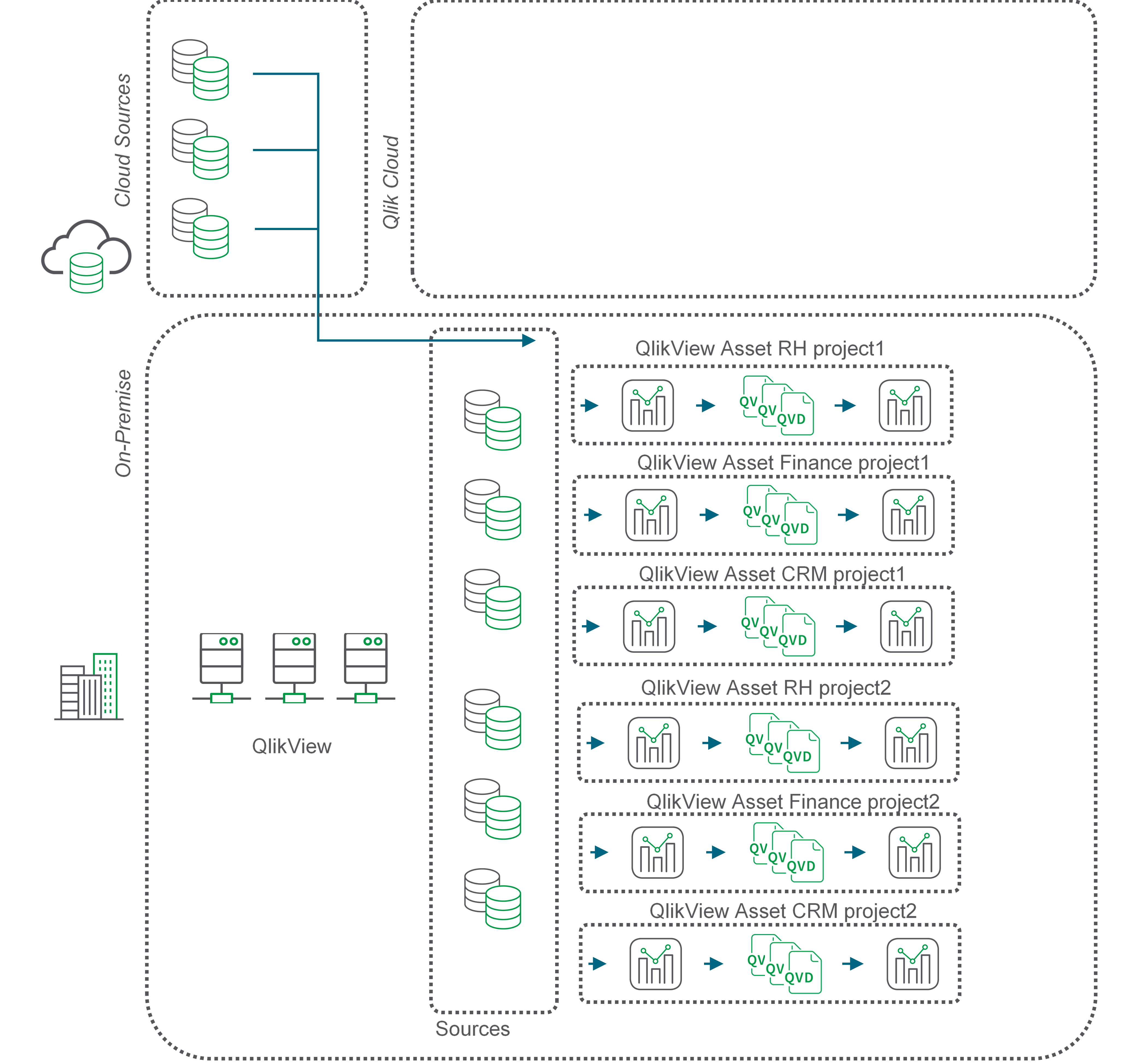
Cloud-based data sources
Move your QlikView assets using only data sources on cloud.
Prerequisites
-
A Qlik Cloud tenant
-
A specific space in which you define your data connections for your projects (optional)
Configuration
-
Create your data and folder connections, see Data Sources in Qlik Sense SaaS
-
For each app (QVD generators, analytics apps), change the call to your data folder connections in the load script using this syntax: lib://<spacename>:<dataconnectionname>
QVD movement for cloud-based data sources
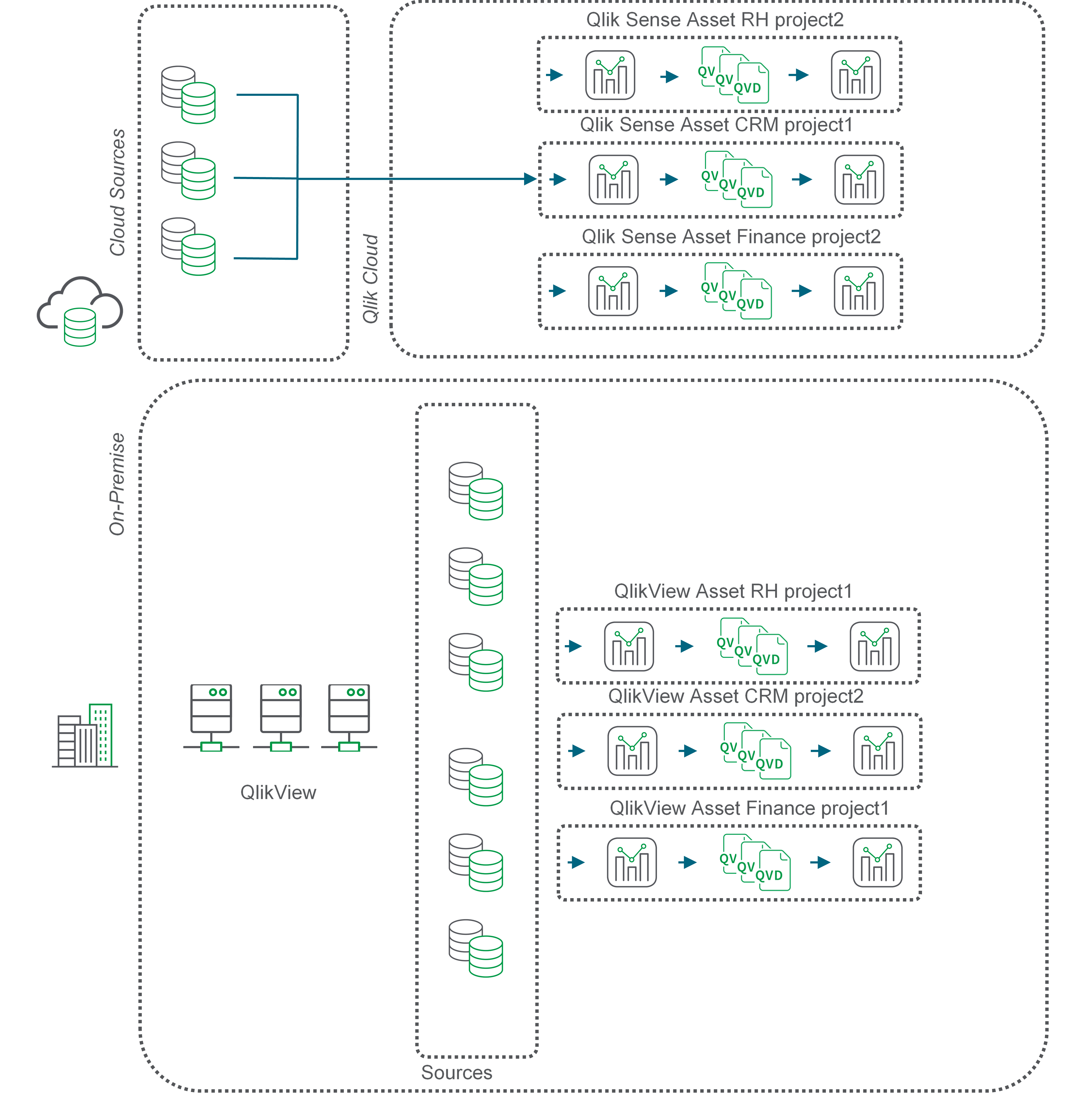
On-premises data sources
Distributing documents to Qlik Cloud should be the first step of your migration plan. This will help reduce the infrastructure footprint of your QlikView site.
Prerequisites
-
QlikView Server April 2020 or later
-
A valid QlikView Publisher license
-
A Qlik Cloud tenant
QVD movement for on-premises data sources.

Qlik Data Gateway - Direct Access
Qlik Data Gateway - Direct Access provides a data connection type with which Qlik Cloud applications can securely access and analyze enterprise data that resides behind a firewall. There are many connector types available. The Direct Access gateway simplifies migration considerably and makes data stored behind a firewall available for analysis in a cloud analytics environment.
You can migrate QlikView applications to the cloud by using the migration tools.
New data connections will need to be set up in Qlik Cloud, however the configuration of these connections is very similar to QlikView connections.
The Qlik Cloud application connection strings can then be changed and the application reloaded. See Data Gateway - Direct Access.
QVD movement using Qlik Data Gateway Direct Access.
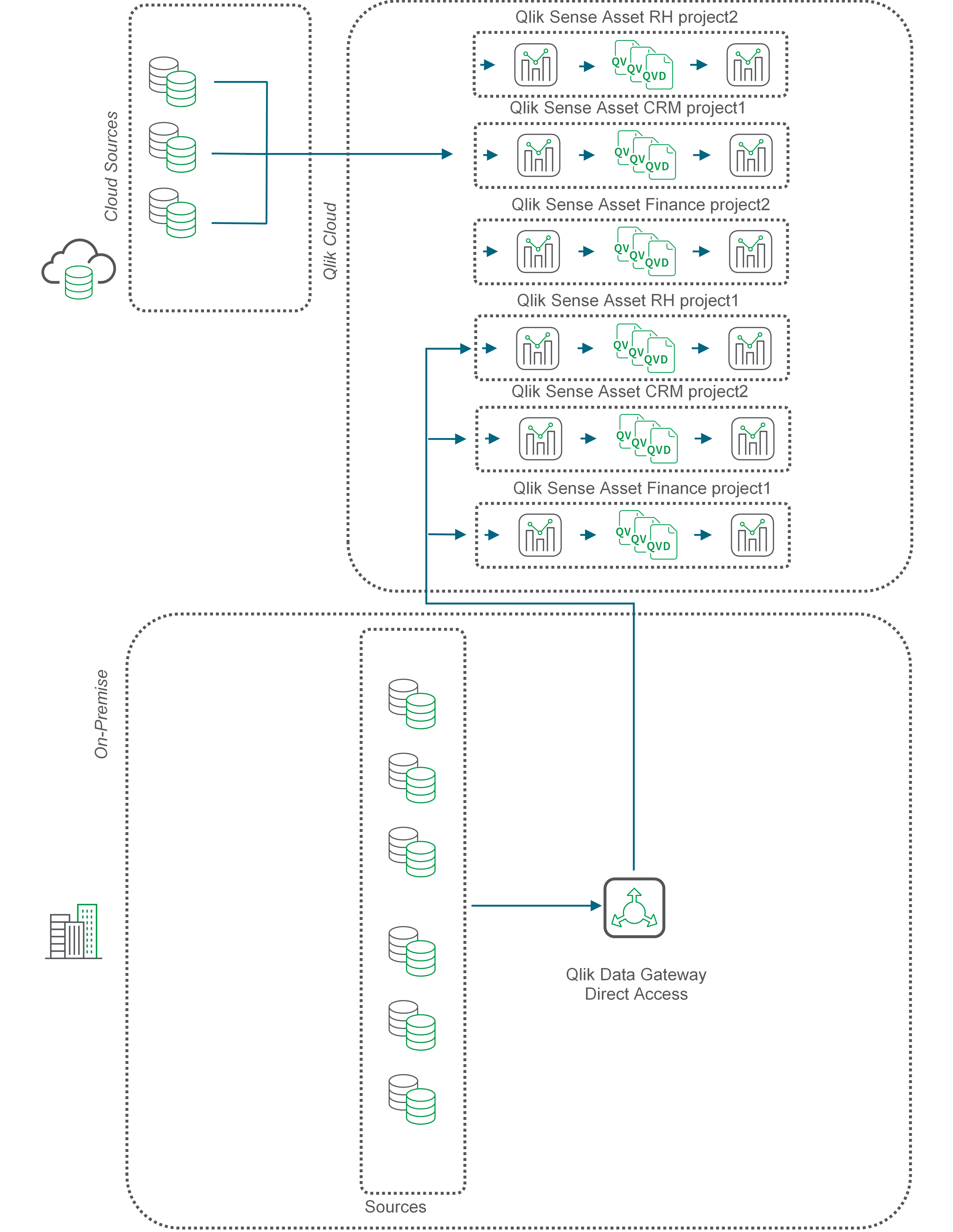
Bring your own data movement (BYODM)
You can use your own tools and scripts to move data in your cloud storage solution or directly in Qlik Cloud, if for example Qlik DataTransfer is not suitable.
QVDs transfer in your cloud storage solution
-
Develop your scripts using your cloud provider tools or APIs to transfer your QVDs.
-
Use your enterprise scheduler to trigger the transfers.
QVD movement with BYODM, Bring your own data movement.
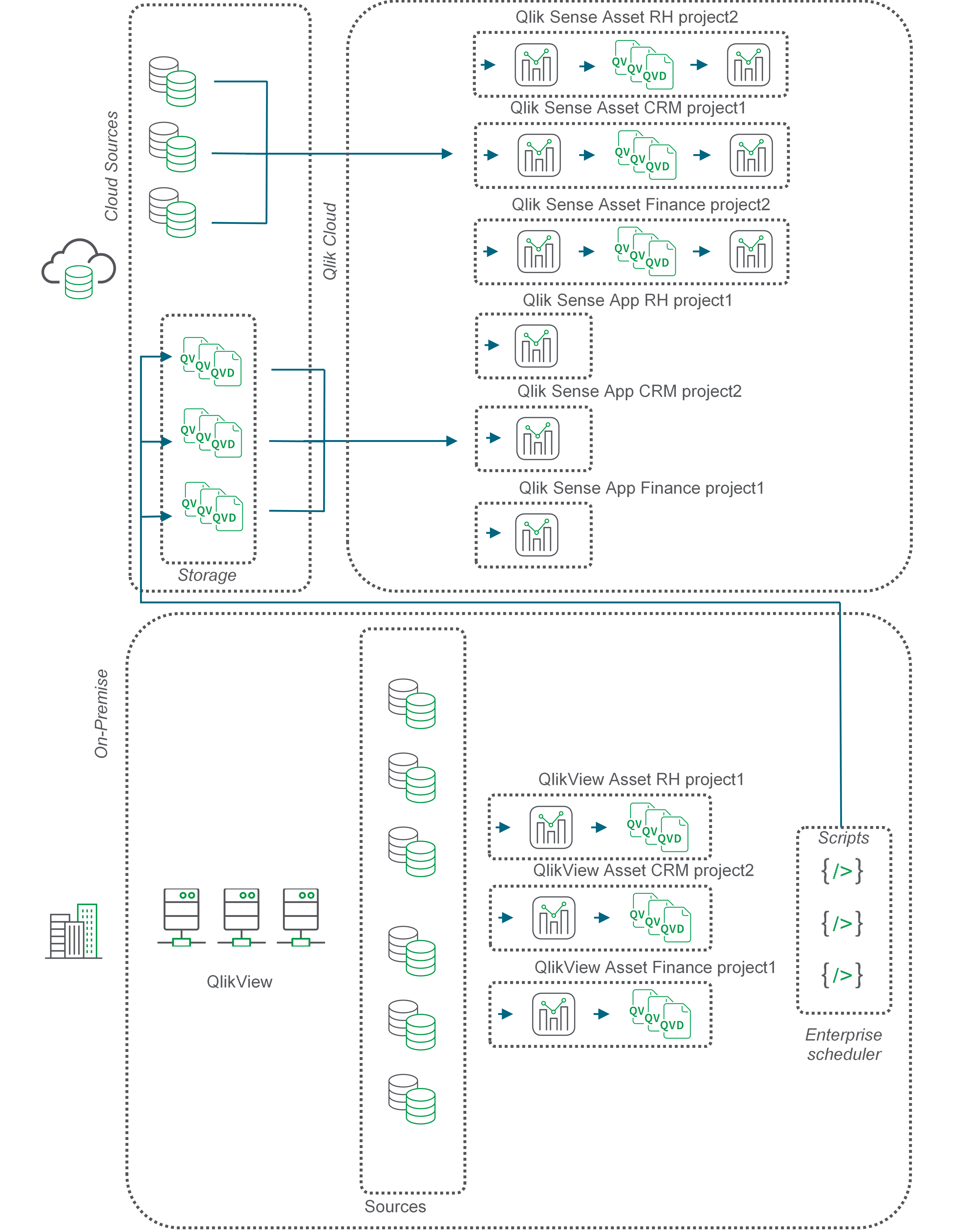
QVD transfer in your Qlik Cloud tenant
-
Use qlik-cli to develop scripts to transfer your QVDs directly to your tenant.
-
Use your enterprise scheduler to trigger these scripts.
QVD movement in your Qlik Cloud tenant.
